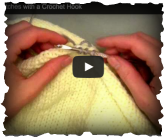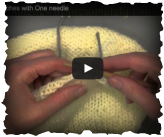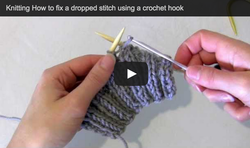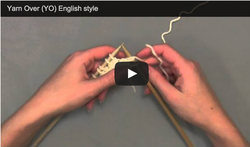How to Measure Gauge on a St st swatch
|
Gauge
Stitches Per Inch To Make It Fit Gauge, also called tension, is the number of stitches per inch that you produce using a certain yarn, with a certain size needles, and how tightly or loosely you naturally knit (tension). Everyone has their own natural tension, but gauge is the ruler we measure knitting tension against so we can produce things in a size that will be appropriate for what we are knitting. Gauge tends to be most important for things that need to fit, such as fitted garments like sweaters and hats. You can probably get away without measuring gauge on some scarves, as long as you don't care what size they turn out. Dish clothes are another example of something that you can get away with not measuring gauge on. Matching Gauge To adjust gauge, if you need to have more stitches per inch than your gauge turned out, you should try switching to smaller needles. Conversely, if you need more stitches per inch than your gauge turned out, you should try using larger needles. The easiest way to adjust gauge is to adjust your needle size. This is because most often we choose our yarn specifically for our project, and don't want to change it. There are limitations on this, however, because some yarns can only produce so small or large of a gauge, depending on their thickness and the size of the needles used. How to Knit a Gauge Swatch Not sure how to knit a gauge swatch? Check out two basic patterns for it here. |
How to pick up stitches using a crochet hook
 How to pick up stitches using a crochet hook How to pick up stitches using a crochet hook
Using a crochet hook to pick up stitches is an unusual method but can make it easier for newer knitters who aren't totally used to the knitting needles.
Advanced Step: How to Pick up stitches using one knitting needle
 How to pick up stitches using one knitting needle How to pick up stitches using one knitting needle
Picking up stitches using just one knitting needle is the most common method that knitters use to pick up stitches along the edge of a fabric.
|




